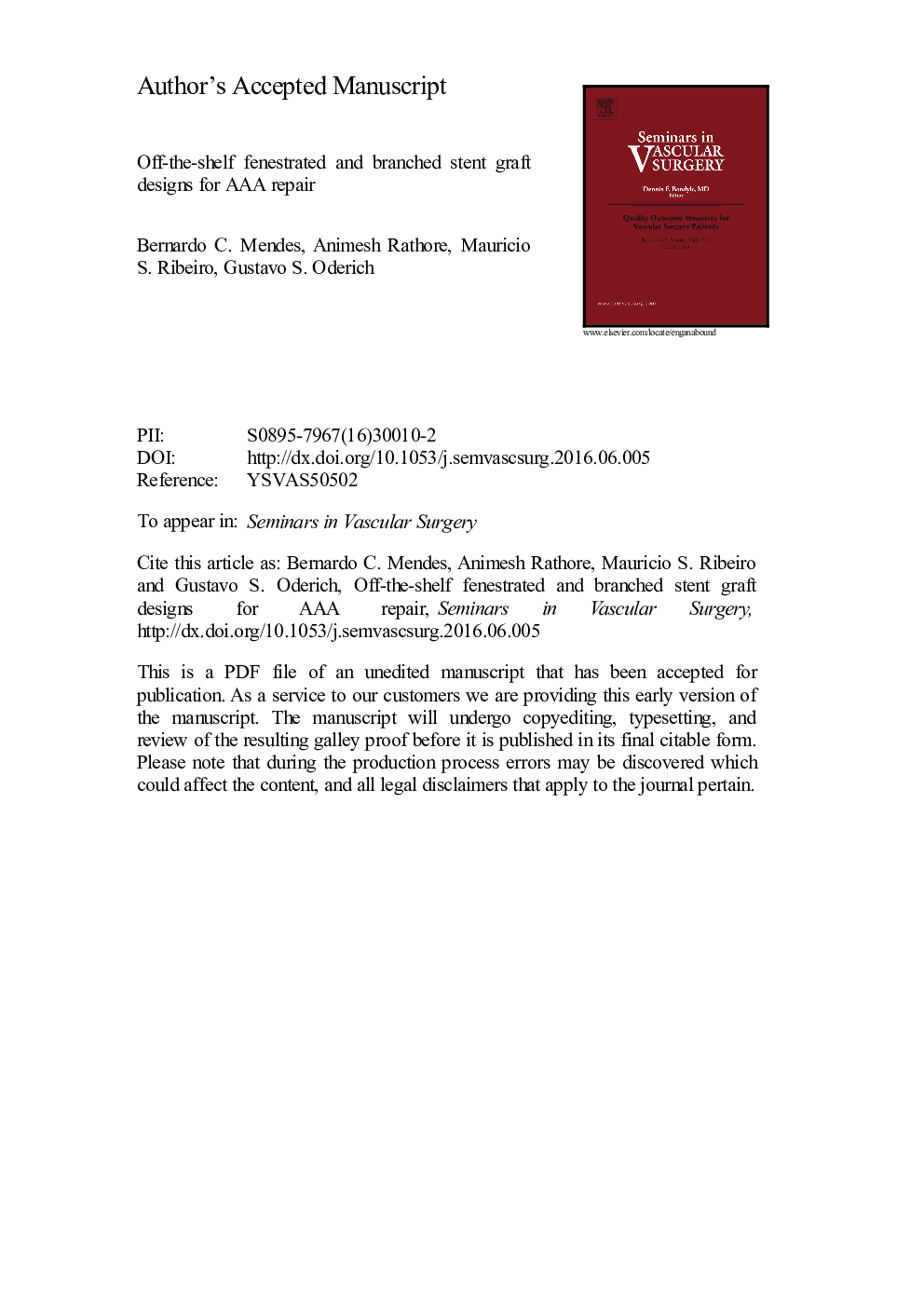| Article ID | Journal | Published Year | Pages | File Type |
|---|---|---|---|---|
| 5621715 | Seminars in Vascular Surgery | 2016 | 27 Pages |
Abstract
Endovascular repair of pararenal and thoracoabdominal aortic aneurysms with fenestrated and branched stent grafts has been increasingly utilized with high technical success and low morbidity and mortality. Freedom from branch-related events has been reported at 89% in 5 years, including any branch-related endoleak, stenosis, kink, disconnection, or occlusion. Patient-specific stent grafts have the advantage of fitting patients' anatomy, but require a 6- to 8-week period for customization. Off-the-shelf stent grafts have been developed based on a relative predictability of renal-mesenteric vessels. Advantages of an off-the-shelf design are elimination of treatment delays and standardization of manufacturing, planning, and implantation techniques. Nevertheless, these devices have significant anatomic constraints that limit their application to all patients. In addition, it is critical that long-term durability of branches either matches or surpasses what has already been reported for patient-specific designs. This article summarizes the state of the art for off-the-shelf fenestrated and branched stent grafts, with emphasis in anatomic feasibility, limitations, and preliminary clinical results.
Related Topics
Health Sciences
Medicine and Dentistry
Cardiology and Cardiovascular Medicine
Authors
Bernardo C. MD, Animesh MBBS, Mauricio S. MD, PhD, Gustavo S. MD,
